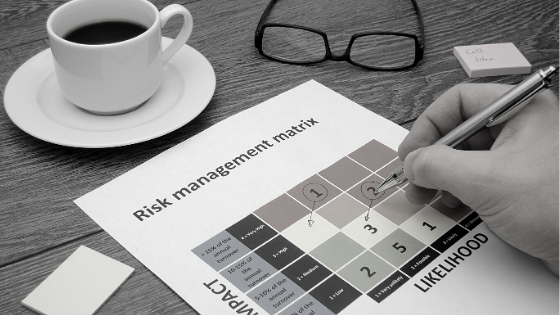In today’s dynamic and rapidly globalising business environment, it can be all too easy to encounter a healthy amount of risks. All industries are accompanied by their own unique set of risks, after all. This is precisely why establishing robust risk management procedures is crucial for the long-term success of not just all Australian businesses, but all businesses period.
But how can business owners approach the task of risk assessments and the development of robust risk management procedures? Of course, there are some no-brainers that can be implemented straight away, like business insurance or OH&S procedures for maintaining the safety of your workplaces. A comprehensive and proactive risk management approach should also involve analysis, planning, and implementation.
In this article, we will explore some key steps to build comprehensive risk management procedures which are tailored to your business needs. So read on to learn more about the expansive process of risk management for modern businesses.
-
Business insurance
First things first, all entrepreneurs must acknowledge that insurance for business serves as a cornerstone of risk management as it can provide you with a safety net that prevents various unforeseen events from threatening your business operation. These (insured) events can be anything from property damage, liability claims, or unexpected disruptions – all of these financial losses will be easily covered if you have an appropriate insurance coverage.
It’s important to note, however, that there are different types of insurance, such as public liability insurance, professional indemnity insurance, and home-based business insurance which each play a pivotal role in protecting you from potential business threats. It’s recommended that business owners engage with and understand more about the specific risks of their unique business and invest in policies that are tailored specifically to mitigate their identified business risks. Consulting with business insurance specialists and risk assessors can help streamline your process of securing suitable insurance for your business.
-
Risk identification
Identifying potential risks or threats is naturally always going to be the first step of your risk management. The process of risk identification involves evaluating the internal and external factors that could impact your operations as well as your reputation.
To be precise, business owners should aim to interact with their stakeholders as well as representatives from different departments to gain diverse perspectives and insights into their company’s risk landscape. After all, there’s only so much you can see from your overarching position.
Some common risks that you may encounter include economic downturns, regulatory changes, cybersecurity breaches, supply chain disruptions, natural disasters, and competitive pressures. Being able to rely on your team to adeptly identify and communicate these risks is the foundation of any effective risk management procedure and will be a vital component for maintaining strong business practices as your company continues to grow.
-
Impact assessment
After identifying potential threats, it is critical to move on to assess their impact and occurrence. The best way to deal with risks is to prioritise them based on their severity and probability. This helps you to focus on those with the highest potential to cause significant harm or disruption.
If you’re at all uncertain about the potential or likelihood of any risks, then we strongly recommend enlisting the services of risk consultants. These professionals can aid your enterprise in adequately outlining and understanding identified risks, both by observing the risks in your workplace and referring to historical evidence or case studies from your wider industry that showcase the true likelihood and impact of those risks.
For smaller companies, you can easily conduct risk assessments by just following guidelines for risk management as outlined by Safe Work Australia, or even guidelines that can be found through industry bodies. Also remember to utilise risk assessment tools and techniques such as risk matrices or scenario analysis. This will aid you in accessing the risks more effectively.
-
Strategy development
If you’ve stuck with us this far, then you’re likely to have a clear understanding of the identified risks such as their probability of occurrence and severity. It will thus be the time to develop a mitigation plan aiming to minimise the risks’ impact. The first thing you can do is implement control measures. You can do this by establishing protocols, guidelines, and procedures to monitor and regulate processes effectively. This makes sure that any deviations are rapidly addressed.
Another strategy that you can adopt is process improvement which includes analysing current processes for inefficiencies and implementing changes to make operations smoother and reduce risks. For instance, you can regularly check how every process in your business can be better addressed and start to implement corrective actions to enhance efficiency and make everything work smoother and safer.
The third approach you may want to take is developing a diversification strategy. This can be implemented by spreading investments, resources, or operations across different markets to reduce dependency on any single source or factor. One possible technique is to diversify the supplier base which reduces the dependence on a single product or service. Be sure to trial these different approaches for each department in your business. You’ll likely find that one approach works for one team, while another works for others, so let your employees maintain the risk management system that suits their workflow best.
-
Monitor and improvement
So you have your risk management strategy or strategies in place – now what? Well, the steps do not end after you have developed mitigation strategies as risk management is an ongoing process that requires constant monitoring and review. You can establish key performance indicators and metrics to track the effectiveness of risk controls and adjust your strategies if needed.
Another thing you’ll want to do is to foster a culture of continuous improvement by seeking feedback, analysing lessons learned from past incidents, and adapting your risk management procedures accordingly. This will encourage proactive risk reporting and create a channel of communication for your employees. Last but not least, remember to always adopt innovation and cut to edge technology to enhance risk management capabilities and stay ahead of evolving threats.
~
By following these steps and risk management, you will be well equipped to protect your business against unforeseen disruptions and minimise financial losses. Always remember that proactive risk management is an ongoing commitment, meaning that this requires adaptability and a willingness to embrace change. Only by acknowledging that your business will navigate through challenges effectively and seize opportunities for sustainable growth.




















